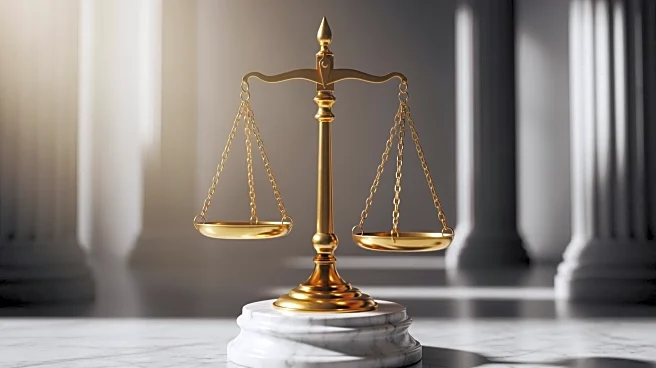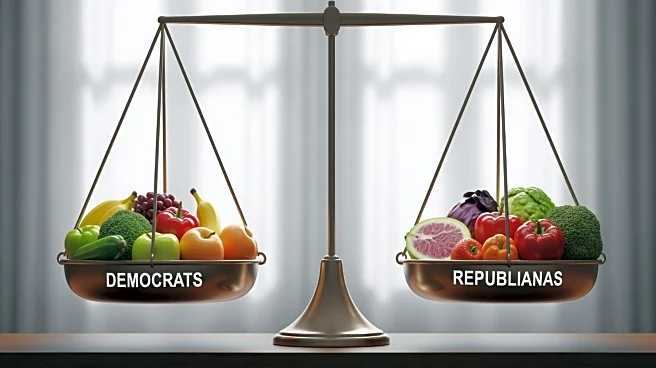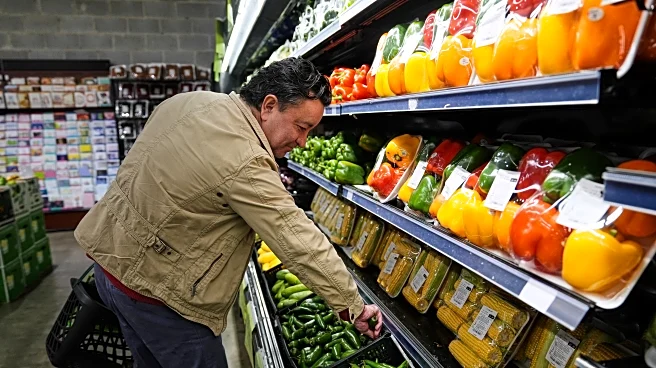What's Happening?
Two federal judges have ordered the Trump administration to allocate emergency funding to sustain the Supplemental Nutrition Assistance Program (SNAP) for the 42 million Americans who depend on it. This
decision comes amidst widespread misconceptions about SNAP, commonly known as food stamps, and recent changes that have expanded work requirements for eligibility. These changes affect able-bodied individuals aged 18 to 64, parents with children over 13, homeless individuals, and young adults transitioning out of foster care, who must now meet an 80-hour monthly work requirement. The Department of Human Services reports a significant increase in SNAP applications, nearly doubling since the COVID-19 pandemic, with around 8,000 applications monthly. The application process involves providing details about household size, income, and assets, and can take up to a month to process.
Why It's Important?
The federal judges' ruling to provide emergency SNAP funding is crucial as it addresses the immediate needs of millions of Americans facing food insecurity. The expanded work requirements could potentially exclude vulnerable groups from receiving necessary assistance, impacting their ability to afford basic nutrition. This decision highlights the ongoing debate over the balance between providing aid and encouraging self-sufficiency. The increase in SNAP applications indicates a growing reliance on food assistance programs, reflecting broader economic challenges faced by many households. The ruling could influence public policy discussions on social welfare programs and their role in supporting low-income families.
What's Next?
The implementation of the judges' order remains uncertain, with no clear timeline or details on the amount of assistance to be provided. Stakeholders, including state agencies and advocacy groups, are likely to monitor the situation closely, advocating for timely and adequate distribution of funds. The increased work requirements may prompt further legal challenges or policy revisions, as affected groups and their advocates push for more inclusive eligibility criteria. Additionally, local food banks and community organizations may need to prepare for increased demand if federal assistance is delayed or insufficient.
Beyond the Headlines
The misconceptions surrounding SNAP, such as the belief that recipients do not work or that benefits are sufficient to live on, underscore the need for public education on the realities of food assistance programs. The average SNAP benefit is $177 per person monthly, which may not cover basic nutritional needs, especially in high-cost areas like Honolulu. This situation raises ethical questions about the adequacy of social safety nets and the societal responsibility to ensure food security for all citizens. The role of local food banks and community support systems becomes increasingly vital in bridging the gap left by federal programs.













